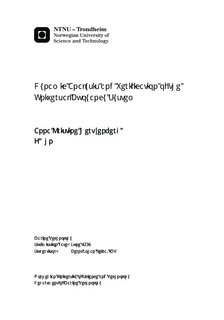| dc.description.abstract | Liquefied Natural Gas (LNG) is becoming an increasingly popular alternative to traditional marine fuels, as it is a cost-effective solution so comply with the new Emission Control Area (ECA) sulphur emission regulations that take effect on 1st January 2015. Connect LNG has developed The Universal Buoyancy System (UBS), a cost-effective and simple concept for offloading LNG for small-scale ships. The system consists of a flexible cryogenic pipeline, a reel on land and a floating semisubmersible platform. The platform is designed to support the external forces acting on the floating cryogenic pipeline and hence protect the vessel s manifold. The platform is attached to the ship side by vacuum technology, and the LNG hose may then safely be connected to the ship s manifold.
This thesis investigates the behaviour of the platform in three different configurations by using two different methods; simulations in MARINTEK s finite element programme SIMA, and model tests performed in the Marine Cybernetics laboratory at MARINTEK, Trondheim.
The platform was exposed to one extreme sea state for three hours, under different configurations and wave headings. The platform was tested alone, connected to the ship side, and connected to both the ship side and the pipeline. As far as possible, the same conditions are used in both model test and in SIMA. In addition, parameters used in the SIMA simulations such as computed transfer functions added mass and damping will be validated in the model test.
The results from the model test to some extent validated the input parameters in SIMA, but were not accurate enough to confirm them. The extreme sea states and setups tested showed that the complete system, with platform, pipeline and ship side was the most vulnerable configuration. The computer simulations and the model test results disagree on whether it is the 315 degree or 90 degree wave heading that is the most severe for the complete system, but the differences between the different wave headings are small in both methods, so this might be due to the modelling differences as well as statistical randomness. | |

